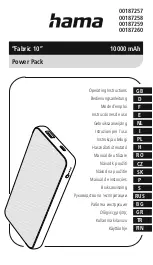
ADJUSTMENTS & OPERATION
WARNING! ALL ADJUSTMENTS MADE TO THIS SHAPER MUST
BE DONE WITH THE POWER CORD DISCONNECTED FROM THE
POWER SOURCE.
Adjusting the Fence Assembly
The fence assembly comes assembled to the shaper table and should
be removed upon delivery, in order to clean the table top under it. The
fence assembly can be removed from the table by undoing the 2 fence
assembly lock knobs (A) Fig.7.
Once the table top is clean, it is important to set the fence in line with
the miter T-slot. It is recommended to clamp a 2x4 with jointed edge in
line with the miter T-slot and to adjust the fence assembly accordingly.
The fence assembly includes a two-piece adjustable fence system.
Each fence is independently adjustable to compensate for different
cutting thicknesses and special shaping applications. One full turn of
the micro-knob (B) moves the split fence approximately 5/64” (.078”).
When removing material from the whole face of your workpiece, the
outfeed fence (C) should be adjusted to the proper offset to provide
support for the workpiece as it passes over the cutter, see Fig.9. To
adjust both split fences;
1) Adjust the infeed fence (D) by loosening the lock ratchet (E) and
then turning the micro-knob (B) so the cutter will remove the
desired amount of stock. Retighten rachet (E) after the adjustment.
2) Make a test and inspect the results.
3) Adjust the outfeed fence (C) to support the new profiled edge.
4) Lock the outfeed ratchet and re-test. See Fig.8 & 9 for improper and
proper outfeed fence positioning.
Resurfacing the Fence
Occasionally the fence assembly needs resurfacing to ensure that the
fence is parallel with itself and square with the table.
Align one or both fence halves so they are in close alignment.
Micro-adjust and check the alignment using a straight edge. If the
fences are not co-planar with each other, resurfacing is necessary.
This operation can be performed by placing the entire fence assembly
on a jointer. Once the fences have been passed on a jointer, use a
straight edge to check squareness.
Note: If the jointer is not set up properly, the results will not be
satisfactory.
FIGURE 7
FIGURE 8
Improper Fence Adjustment
Cutter Rotation
Infeed Fence
Outfeed Fence
Workpiece
Feed Direction
FIGURE 9
Proper Fence Adjustment
Cutter Rotation
Infeed Fence
Outfeed Fence
Workpiece
Feed Direction





























